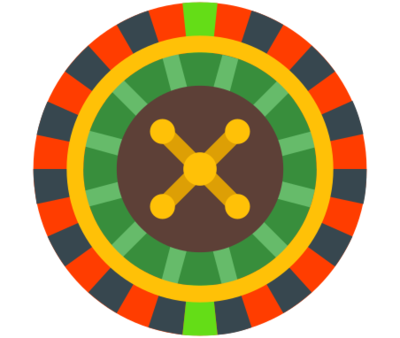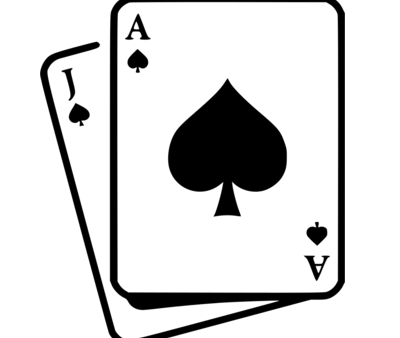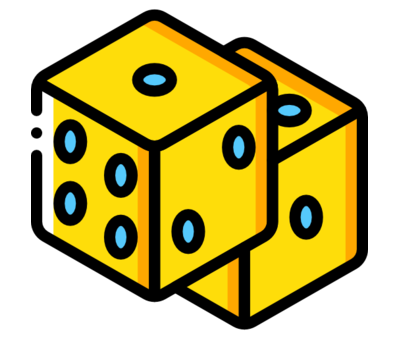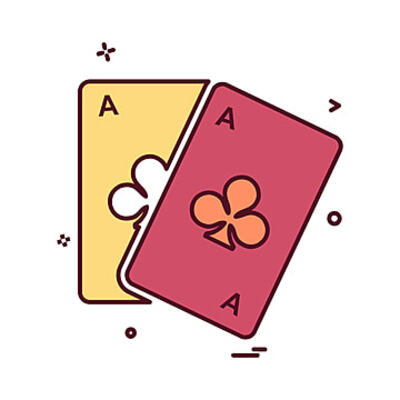
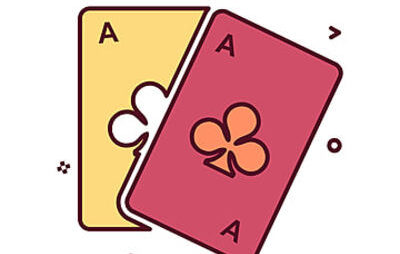
Poker is any of a number of card games in which players wager over which hand is best according to that specific game’s rules in ways similar to these rankings. A player who matches a bet may also “raise” (increase) the bet. The betting round ends when all players have either called the last bet or folded.
As early as the sixteenth century, Germans played a bluffing game called “Pochen.” It later developed into a French version, called “Poque,” which was eventually brought over to New Orleans and played on the riverboats that plied the Mississippi.
In the 1830s, the game was refined further and became known as Poker. During the Civil War, the key rule about drawing cards to improve one’s hand was added. A variation – Stud Poker – appeared at about the same time.
There are hundreds of versions of Poker, and the game is played not only in private homes, but also in countless Poker rooms at famous casinos. Poker can be played socially for pennies or matchsticks, or professionally for thousands of dollars.
There is plenty of luck in Poker, but the game requires incredibly great skill as well, and each player is the master of his own fate.
Betting
This is going to be a rough guide on how to play a hand using poker rules, with an example listed below. A hand of No-Limit Texas Hold’em begins with each player receiving two cards facedown, called “hole cards.”
Players will always have these options when it’s their turn to act: bet, call, raise or fold.
Players can win a hand by using any combination of their two-hole cards and five community cards on the board to form the best five card hand.
Remember, after players receive their cards, a round of “preflop” betting occurs. Each “street,” or round after that, has a different name.
Flop – The first three community cards dealt are referred to as “the flop”. All remaining players can use these community cards to try and make the best poker hand. Play continues with a round of betting. The action starts with the first player still in the hand who is to the left of the dealer button.
Turn – After completing the round of betting on the flop, another community card is dealt, called the turn (AKA Fourth Street). A total of two hole cards and four community cards are available for active players to try and make the best five-card hand.
Another round of betting takes place. Again, the action starts with the first remaining player seated to the left of the button. Play always continues in a clockwise direction. When all remaining players have acted, the betting round ends.
River – The river (AKA Fifth Street) is the fifth and last community card. A final round of betting takes place. If there’s a showdown – the point where all action is complete – players turn up their hands. The last player to bet, known as the last aggressor, must show first. Whoever holds the best five-card hand wins the pot, This action completes the hand, moving on to a new one.
Example: In a $1/$2 No-Limit Hold’em game, you are first to act after the big blind (more on the blinds below). You are facing a $2 “blind” bet, So, you can either call that amount, raise it, or fold.
Let’s assume you raise to $6 holding the A♦K♣. Everyone else folds around to the player in the big blind, who puts in the extra $4 to call.
The flop comes down A♣5♠6♥ . The player in the big blind is first to act and can either check or bet. There’s no need for the to fold as there is no bet. They wind up checking, and you bet $10 with your top pair.
The player in the big blind calls and the K♦ turns. Again, your opponent checks. You bet $25 with two pair. The big blind calls once more and the 2♣ completes the board on the river.
Your opponent checks, for a third time, and calls when you bet $100.
The action is over, so it’s time to show your cards.
You turn over your two pair (your A♦K♣ plus the A♣K♦6♥ on the board make your best possible five-card hand).
Your opponent shows he was beat as he only had the A♥Q♠ for a losing pair of aces. (Their A♥Q♠ plus A♣K♦6♥ from the board gives them their best possible five-card hand.)
Congratulations, you won a nice pot!
So that’s how a hand works, and you know the poker rules for it, where it gets complicated is how you play your own hand and compete with others. There are a few more things for you to pay attention to, like where the dealer is sitting.
Ranking
While Poker is played in innumerable forms, a player who understands the values of the Poker hands and the principles of betting can play without difficulty in any type of Poker game. Except in a few versions of the game, a Poker hand consists of five cards. The various combinations of Poker hands rank from five of a kind (the highest) to no pair or nothing (the lowest):
- Royal Flush: This hand is the rarest in poker. It’s when you make a ten-to-ace straight all in the same suit such as A♦K♦Q♦J♦T♦
- Straight Flush: Five consecutive cards of differing suits, like 8♠7♠6♠5♠4♠, then you have a straight flush
- 4-of-a-Kind: The name says it all! If you have all four of the same card, like A♠4♠4♣4♥4♦ then you have quads!
- Full House: Also known as a “boat,” it’s when you have three of a kind along with a pair – for example: A♦A♣A♥J♥J♠ (three of one, two of the other)
- Flush: There are four suits in poker (diamonds, hearts, spades, and clubs). When you have five cards all in the same suit, you have a flush. An example might be A♥J♥8♥4♥2♥
- Straight: Five consecutive cards of differing suits, like 8♥7♣6♦5♦4♠ is a straight. An A-2-3-4-5 straight is known as a “wheel,” while 10-J-Q-K-A is called “Broadway.”
- 3-of-a-Kind: Whenever you have three of the same cards (i.e. A♠K♥5♠5♦5♣) you have three-of-a-kind. If you make three-of-a-kind with a pair in the hole and one on the board, it’s “a set.” If you make it with two on the board and one card in the hole, then it’s called “trips.”
- Two Pair: Is when you have not one, but two pairs. The fifth card is your kicker. For instance, if you have A♣K♥5♥K♠5♦ you have kings and fives with an ace kicker.
- One Pair: There are thirteen different cards of each suit. Whenever you match two, it’s called a pair. For example,A♦A♣7♠4♠2♣2 is a pair of aces.
- High Card: If no one can make a ranked hand (different suits, non-connected, unpaired) it comes down to your high card(s). If you have A♣Q♦9♥6♣3♦ then you have ace-queen high.
Pack
The standard 52-card pack, sometimes with the addition of one or two jokers, is used. Poker is a one-pack game, but today, in virtually all games played in clubs and among the best players, two packs of contrasting colors are utilized in order to speed up the game. While one pack is being dealt, the other is being shuffled and prepared for the next deal. The procedure for two packs is as follows: While the deal is in progress, the previous dealer assembles all the cards from the pack he dealt, shuffles them, and places them to the left. When it is time for the next deal, the shuffled deck is passed to the next dealer. In many games in which two packs are used, the dealer’s left-hand opponent, instead of the right-hand opponent, cuts the pack.
In clubs, it is customary to change cards often and to permit any player to call for new cards whenever they wish. When new cards are introduced, both packs are replaced, and the seal and cellophane wrapping on the new decks should be broken in full view of all the players.
When to bet
The ranking of Poker hands is based on mathematics. The less likely a player is to get a certain hand, the higher it ranks and the more likely it is to win the pot. For example, a player should not expect to be dealt a straight flush more than once in 65,000 hands, but they can expect to be dealt two pair about once in every 21 hands.
Unless a player is planning to bluff, they should not make a bet without holding a hand that they think may be the best. No Poker player can bet intelligently unless they know what constitutes a good hand, a fair hand, and a bad hand. A table of the various Poker hands and the number of combinations of each in a pack of cards is provided.
Poker tournaments vs cash games
When you play poker against other players, you do so in one of two formats – tournament or cash game (AKA ring game) and these each have their own unique poker rules.
The basics outline above are the same, but there are four significant differences.
- Blinds: In cash games, the blinds are always fixed (i.e. $1-$2, $2-$5, etc.) and never increase. While in tournaments, the blinds increase every X-number of minutes, based on the blind structure. They do so to force action and ensure the tournament ends on time.
- Duration: Cash games are convenient as you can come and go as you please. Tournaments are different. Play continues (according to the blind structure) until a winner is crowned.
- Chips: In cash games, each chip has a denomination that corresponds to its real-money In tournaments, chip denominations typically do not have real-money value. For example, in a $100 buy-in tournament, you may receive 10,000 units worth of chips.
- Antes: Antes are like blinds in the sense that they are forced bets taken from players before the start of a hand. They are common in tournaments but do occasionally pop up in cash games. They do not contribute to money used in the first (preflop) round of betting, unlike the blinds.
Antes are merely used to boost the size of the pot preflop. They give players more incentive to fight for the dead money in the middle.
Do note that either “button” or “big blind” antes (one larger-sized ante taken from one player) are replacing traditional antes to save on time. This format is happening especially in tournaments to move the pace of the game along.
As the blinds rotate at the end of each hand, all players will be subject to a button ante, every orbit.
6. Chips
Poker is almost always played with poker chips. For a game with seven or more players, there should be a supply of at least 200 chips. Usually, the white chip (or the lightest-colored chip) is the unit, or lowest-valued chip, worth whatever the minimum ante or bet is; a red chip (or some other colored chip) is worth five whites, and a blue chip (or some other dark-colored chip) is worth 10 or 20 or 25 whites or two, four or five reds. At the start of the game, each player “buys in” by purchasing a certain number of chips. All of the players usually buy in for the same amount.
7. Banker
One player should be designated as the banker, who keeps the stock of chips and records how many have been issued to each player or how much cash the player has paid for their chips. Players should make no private transactions or exchanges among themselves; a player with surplus chips may return them to the banker and receive credit or cash for them, while a player who wants more chips should obtain them only from the banker.
8. Poker betting limits
There are different ways of fixing a betting limit. Some limit is necessary; otherwise a player with a lot more money would have, or would be perceived to have, an unfair advantage. Once fixed, the limit should be unalterable throughout the game unless the players unanimously agree to change the stakes. Some popular limit systems follow:
9. Fixed limit
No one may bet or raise by more than a stipulated number of chips, for example, two, or five, or 10. Usually this limit varies with the stage of the game: In Draw Poker, if the limit is five before the draw, it might be ten after the draw. In Stud Poker, if the limit is five in the first four betting intervals, it is 10 in the final betting interval (and often ten whenever a player has a pair or better showing).
10. Pot limit
Any bet or raise is limited to the number of chips in the pot at that time. This means that a player who raises may count as part of the pot the number of chips required for the player to call. If there are six chips in the pot, and a bet of four is made, the total is 10 chips; it requires four chips for the next player to call, making 14; and the player may then raise by 14 chips. But even when the pot limit is played, there should be some maximum limit, such as 50 chips.
11. Poker table stakes
The limit for each player is the number of chips the player has in front of them. If the player has only 10 chips, they may bet no more than 10 and he may call any other player’s bet to that extent. In table stakes, no player may withdraw chips from the table, or return chips to the banker, until they leave the game. A player may add to their stack, but only between the deal just completed and the beginning of the next deal.
12. Variants of Poker
While Texas Hold’em is the most popular form of poker, it is far from the only game. There are dozens of variations, with many catching up on Hold’em’s popularity.
Here’s a look at some of poker’s other variants:
- Pot-Limit Omaha
- Omaha Hi/Lo
- 7-Card Stud
- 7-Card Stud Hi-Lo
- Razz
- 2-7 Triple Draw
- Badugi
- Short Deck Hold’em
- Pineapple & Crazy Pineapple

